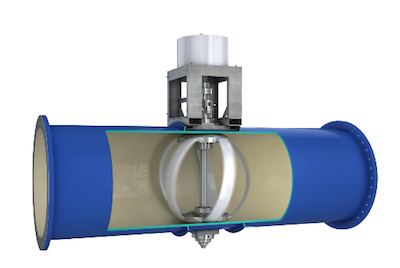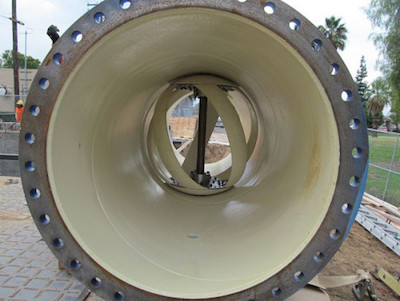Portland Making Energy from Flushing Toilets??

Cities and towns have rivers of water running all through them and under them, in the form of the municipal water system to moves water to and from our homes and businesses. Now, Portland Oregon has found an ingenious way to harness the energy in that water to create energy .
Water turbines have long been touted as a way to generate clean, renewable energy. Until now, most talk of water turbines has centered around placing them in areas where water currents move naturally, such as wave action or river currents.
Man-Made Water Currents
Portland has recently installed hydroelectric water turbines in one of the city's main water lines to test their ability to create energy from the water pressure that's created whenever citizens run a faucet, do laundry, shower, or flush a toilet.
All of these everyday water-based activities are already occurring; all of that water is constantly moving from water treatment plants to homes and businesses and back to the plants. Portland has made a wise decision to start harnessing the energy that all moving water creates.
Moving Water = Energy
The underground water pipe turbines work the same way hydroelectric turbines work in the wild. As the water moves downhill (gravity), it passes through the turbines, spinning them, which generates an electrical current. It's a simple, elegant energy solution, using an infrastructure that is already in place.

The test water turbines in place are already creating power, and have started recouping the cost of their installation. Once the water turbines are rolled out city-wide, Portland estimates they will be capable of creating energy energy to power hundreds of thousands of homes.
Portland's hydroelectric turbines are designed by Lucid Energy. Their LucidPipe Power System has the real potential to revolutionize the renewable energy field, and may be an important component in a diverse renewable energy portfolio along with solar and wind. And all by doing the things we're already doing: turning on a faucet or flushing the toilet.
(I just don't want to be the guy that has to go down there and clean the turbines out when there's a clog. But that's why we have robots, right?)
Learn more about how we may all soon be turning our water pipes into water generators:
comments powered by Disqus


























































































































































































